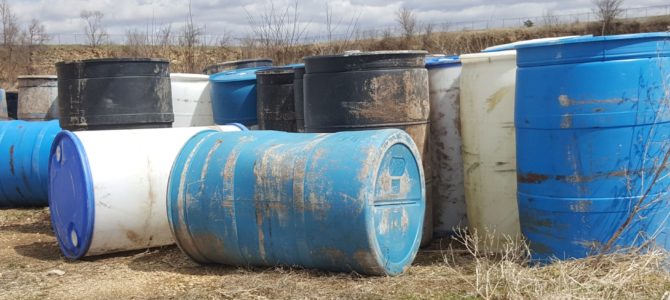Question (05.02.18):
I am in the State of <<REDACTED>> and need to know the regulations regarding picking up and hauling empty drums.
I work for an Oil Company that delivers and picks up drums. When picking up drums we sometimes come across drums that do not have any labels or markings of any kind. We don’t know if it had hazardous material of any kind in it. Of course these drums have some residue in them.
Are we legal to pick up and haul these (so called) empty drums?
Please let me know what you think.
Thank you;
My initial answer May 08, 2018:
I apologize for my delay in responding. Please see below.
- If a packaging does not contain a hazardous material or the residue of a hazardous material, then it is not required to display a label or marking of any kind. Even one to indicate it is non-hazardous.
- In my experience most oil-based products are not hazardous materials as defined by USDOT/PHMSA. Of course, that does not mean that every drum you come across can be assumed to be non-HazMat.
- It is the responsibility of the shipper to classify its material as either hazardous or non-hazardous.
- If the drums do not contain a hazardous material – or the residue of one – there are no regulations of the USDOT/PHMSA for its transportation. In other words, no package labels or marks, no shipping paper, and no placards, &etc.
- If the drums do contain the residue of a hazardous material, it may be transported according to the USDOT/PHMSA Regulations for Transport of Empty HazMat Packagings
- Your state of operation is not a factor. USDOT/PHMSA Hazardous Materials Regulations are the same nationwide. However, state regulations may differ regarding the licensing, registration, and fees for a commercial motor vehicle. This will require more research on your part.
I may be able to provide more assistance if you have more specific information about the oil. Can you provide a safety data sheet (SDS)?
Please contact me with any other questions.
He had a follow-up question:
Should drums that do not have labels on them be transported? If you don’t know what product was in the drum, how can you know if you need to placard or not?
And my answer:
Good question. I think my answer may not satisfy you:
- If the residue in a drum is not a hazardous material then it is not required to be identified as either hazardous or non-hazardous. i.e., no package labels or marks, no shipping paper, no placards, &etc.
- It is the responsibility of the shipper (the one who offers the material for transport) to classify it as either hazardous or non-hazardous.
- If the result of the classification is a non-HazMat, then the shipper is not required to provide any information to the carrier.
- If it is classified as a HazMat, then the shipper must communicate to the carrier the information necessary for its safe transport.
- The carrier must rely on the information provided by the shipper to transport the material.
- Per 49 CFR 177.801, it is the responsibility of the carrier to reject a consignment if they determine it to be forbidden or otherwise not in compliance with the Hazardous Materials Regulations.
But of course you must make your own assessment of the risk to determine if it is indeed a hazardous material.
Conclusion:

One can only hope that everyone involved in the transport of a hazardous material has received high-quality HazMat Employee Training and complies with the Hazardous Materials Regulations.

